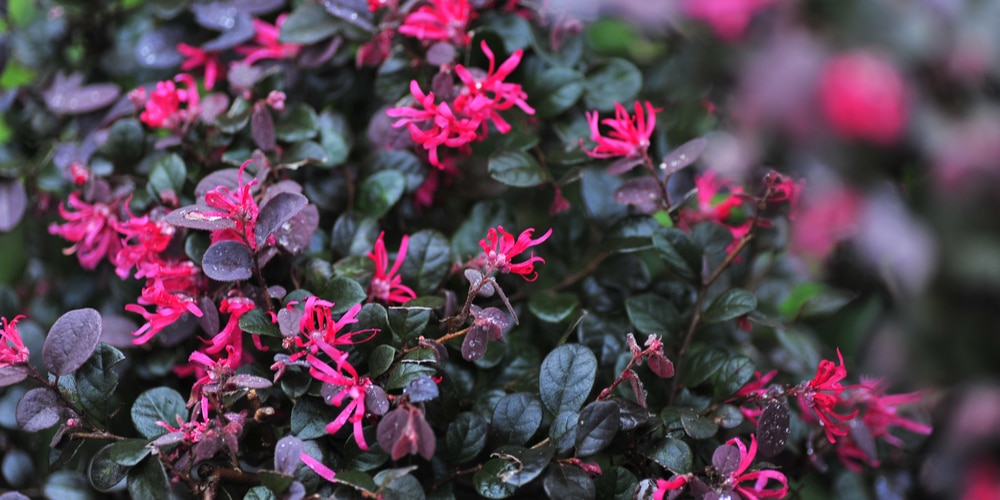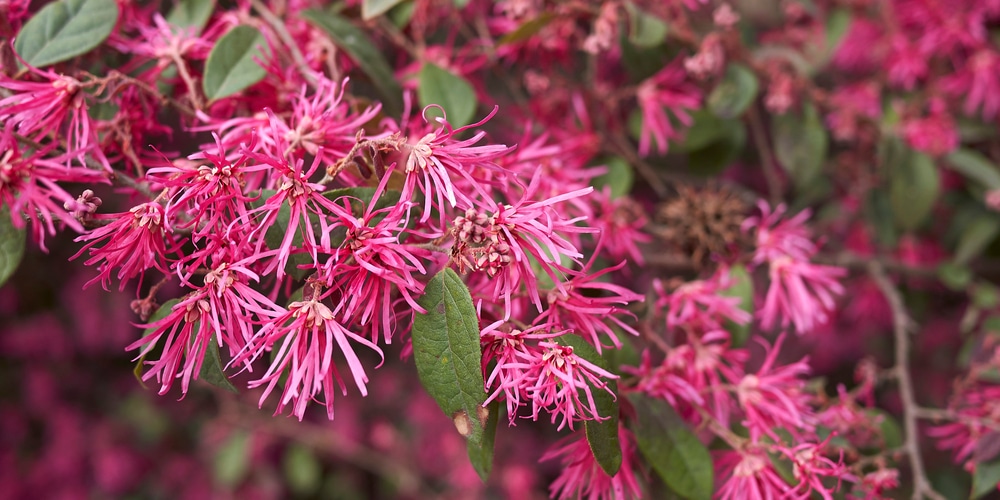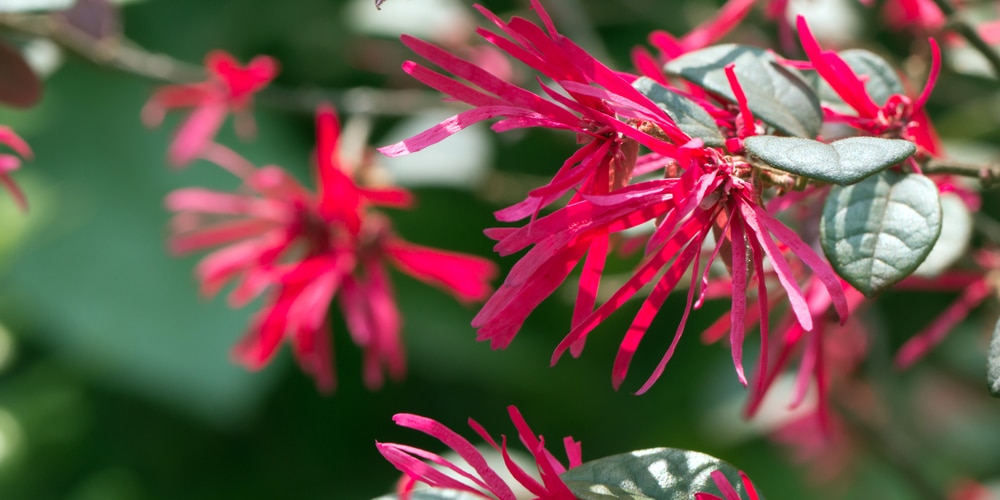Lush, dense, and vibrant – these are just a few words that perfectly describe Loropetalum shrubs. Its deep, rich foliage contrasts beautifully against its delicate, dainty flowers. This Chinese native has quickly become a gardener’s favorite in recent years. And while its vibrant hues are certainly eye-catching, many gardeners are curious about one thing – is Loropetalum evergreen?
Loved for its stunning and striking color, Loropetalum is available in a range of shades, from deep burgundy to soft pinks. Its long-flowering season is another big selling point – these shrubs can bloom from late winter right through to early spring.
The answer is yes – for the most part. Loropetalum shrubs are mostly evergreen, meaning they will retain their foliage all year round. With the ability to grow up to 15 feet tall, they make for a wonderful hedge or privacy screen.
Does Loropetalum Lose Its Leaves in Winter?
As evergreen shrubs, the majority of Loropetalum varieties will retain their leaves throughout the winter months. For this reason alone, they are a popular choice for those looking to add some year-round interest to their garden.
However, if you’ve noticed that your Loropetalum plant has started to lose its leaves, there’s no need to panic. While they’re mostly evergreen, Loropetalum can shed its leaves in colder weather – this is perfectly normal and nothing to be concerned about. Although hardy, these plants may require a bit more care during the colder months.
Some other reasons may include but are not limited to:
Transplant Shock
When you first plant your Loropetalum, it may go through a period of adjustment as it settles into its new home. During this time, it’s not uncommon for the shrub to lose some leaves.
This happens in most plants as they need to acclimate to their new environment – once they’ve settled in, they should start to grow and thrive.
Too Much Water
Loropetalum likes its soil to be moist but not soggy. If you’ve been watering your shrub too often, this could be the cause of leaf loss. You can simply cut back on watering and see if this helps the plant to recover.
Lack of Nutrients
Like all plants, Loropetalum needs nutrients to survive and thrive. If your shrub isn’t getting the nutrients it needs come springtime, its leaves may start to droop and fall off.
Use a slow-release fertilizer in the spring to give your Loropetalum a boost and help it to recover. This can help prevent leaf loss and encourage healthy growth in preparation for the warmer and colder months ahead.
Loropetalum as Privacy Hedges
Growing within 10-15 feet tall and approximately as wide, Loropetalum is ideal for use as privacy hedges. Their delicate texture and dense growth habit make them perfect for this purpose.
Even better, these shrubs can be easily shaped and pruned to create the perfect hedge for your garden.
Loropetalum can be a bit finicky when it comes to pruning, so it’s important to do this carefully. Depending on the variety, Loropetalum can be pruned anywhere from one to three times per year. Their slow growth rate means that they won’t need as much pruning as other hedges.
To achieve a neat and tidy hedge, pruning during the spring is recommended. This way, you can shape the shrub and remove any dead or damaged leaves before new growth begins.
Is Loropetalum Evergreen: Final Thoughts
One of the most enticing things about Loropetalum is its vibrant and beautiful foliage that lasts throughout the year. If you’re looking for an evergreen shrub to add some year-round interest to your garden, Loropetalum is an excellent choice.
Often used as privacy hedges, focal points, or foundation plants, these shrubs are versatile and easy to care for. With a little bit of TLC (especially during the winter months), you’ll be able to enjoy the deep brown, burgundy, or purple leaves of your Loropetalum all year round!


